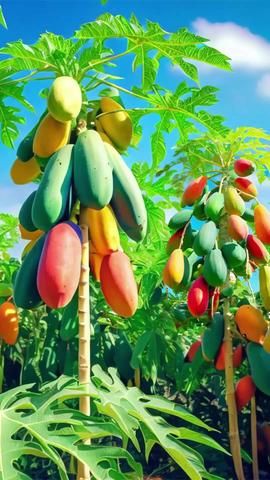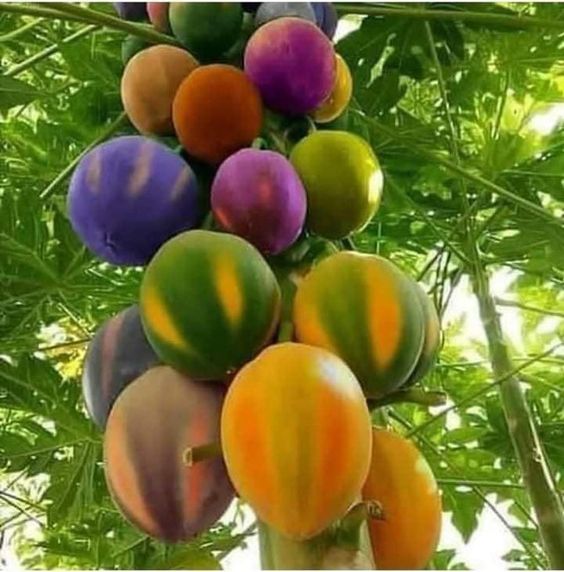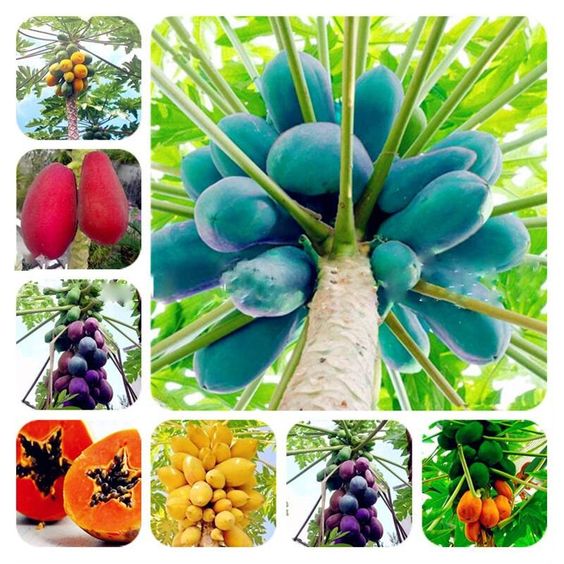Captivating Diversity: Multicolored Papaya Trees in Their Natural Splendor

Multicolored papaya trees stand as a testament to the captivating diversity found in nature’s splendid repertoire. Found in tropical regions across the globe, these majestic trees boast a kaleidoscope of hues that mesmerize and enchant all who behold them. From lush shades of green to vibrant splashes of red, orange, and yellow, each tree is a living canvas, showcasing nature’s boundless creativity.
In tropical climates, papaya trees thrive, basking in the warm sun and nutrient-rich soil. As they grow, their broad leaves unfurl to reveal a symphony of colors, painting the landscape with their vibrant presence. The colors of papaya trees can vary depending on factors such as soil composition, climate, and genetic diversity, resulting in an endless array of stunning combinations.

One of the most striking features of multicolored papaya trees is their fruit. Papayas themselves come in a spectrum of colors, ranging from deep green to golden yellow and even shades of orange and red when fully ripe. The contrast of these colorful fruits against the backdrop of the tree’s lush foliage creates a breathtaking sight that is a true feast for the eyes.
Beyond their visual appeal, multicolored papaya trees play a vital role in their ecosystems, providing food and shelter for a myriad of species. Birds flock to their branches to feast on their sweet fruits, while insects and other small creatures seek refuge among their leaves. In this way, papaya trees serve as vital hubs of biodiversity, supporting the intricate web of life in their habitats.

Culturally, papaya trees hold significance in many tropical societies, where they are revered for their nutritional value and medicinal properties. The fruit of the papaya tree is rich in vitamins, minerals, and antioxidants, making it a valuable source of nutrition for communities living in tropical regions. Additionally, papaya leaves and other parts of the tree are used in traditional medicine to treat a variety of ailments, further highlighting their importance to local cultures.
Despite their beauty and resilience, multicolored papaya trees face threats from deforestation, climate change, and habitat destruction. Conservation efforts are underway to protect these precious trees and preserve their natural habitats for future generations to enjoy.

In conclusion, multicolored papaya trees are a testament to the incredible diversity and beauty of the natural world. With their vibrant colors, vital ecological role, and cultural significance, these majestic trees capture the imagination and inspire awe in all who encounter them. As stewards of the planet, it is our duty to protect and preserve these remarkable treasures for generations to come.
